Affiliate links on Android Authority may earn us a commission. Learn more.
The best dual-SIM Android phones available
Published onJanuary 30, 2025






















While most users can get by with a single SIM handset, there’s something to be said about the flexibility a dual-SIM device can offer. A dual-SIM setup lets you have two phone numbers while also using dedicated SIM cards for data and calls/texts. Most of the best smartphones on the market now offer this capability, but not every device is worth its salt. Here are our picks for the best dual-SIM Android phones you can buy, but make sure you don’t accidentally grab a single SIM version instead since some of the devices listed below come with just one SIM card slot in a few markets.
Why should you consider a dual-SIM smartphone?
While most people can get by with a single SIM in their phone, a dual-SIM device offers much more flexibility. A phone with dual-SIM support lets you store two (or more) phone numbers while also having data and texting attached to each SIM. This can be especially handy for traveling as you can get a local SIM card for cheap data and continue receiving calls or SMS on your original number. Here are our picks for the best dual-SIM Android phones you can buy, but read the spec sheet to make sure you don’t accidentally grab a single-SIM version, as some of our picks come in multiple configurations.
Dual SIM phones typically keep two carrier connections on standby. This is also known as Dual SIM Dual Standby (DSDS). When you need to use one line for a call or data, the other network becomes inactive and cannot be used simultaneously. This dual-standby approach saves phone designers the hassle of adding a second antenna system.
The best dual-SIM Android phones
Samsung Galaxy S25 series
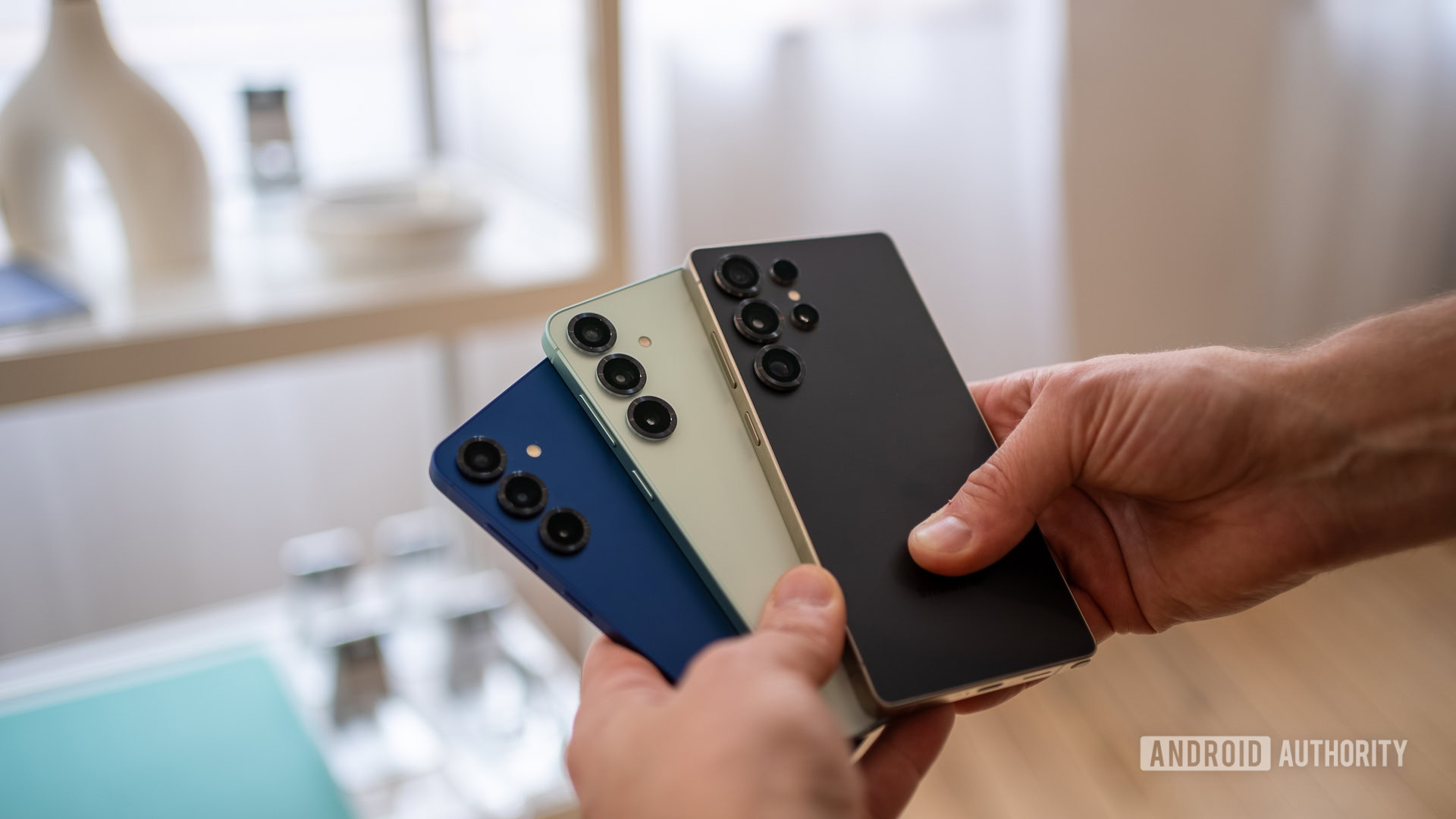
Samsung has been offering dual-SIM capabilities for generations now, and the Samsung Galaxy S25 series won’t be the exception. The Samsung Galaxy S25, Galaxy S25 Plus, and Galaxy S25 Ultra all come with dual-SIM capabilities, as well as eSIM support.
Other markets may have other configurations, but in the US, you get one nano-SIM card slot and one eSIM. These can be active simultaneously to achieve dual-SIM support.
These are all but guaranteed to be the most popular handsets on this list. Aside from offering dual-SIM capabilities, they are amazing handsets with high-end features and specs across the board.
All models come with premium specs, including a Qualcomm Snapdragon 8 Elite for Galaxy and 12GB of RAM. The performance will be no issue. These also come with a gorgeous Dynamic LTPO AMOLED 2X that offers a 120Hz refresh rate. Size ranges from 6.2 to 6.9 inches, and resolution improves as you upgrade.
Samsung's S25 series pairs cutting-edge hardware with a feature-packed software platform.
These camera systems are also almost guaranteed to make our list of the best camera phones. We need to review them, but so far, our experience with them has been very positive.

12GB RAM
7 years software support
Galaxy S25 specs:
- Display: 6.2-inch, FHD+
- SoC: Snapdragon 8 Elite for Galaxy
- RAM: 12GB
- Storage: 128/256/512GB
- Cameras: 10, 12, and 50MP
- Front camera: 12MP
- Battery: 4,000mAh
- Software: Android 15
Galaxy S25 Plus specs:
- Display: 6.7-inch, QHD+
- Chipset: Snapdragon 8 Elite for Galaxy
- RAM: 12GB
- Storage: 256/512GB
- Cameras: 10, 12, and 50MP
- Front cameras: 12MP
- Battery: 4,900mAh
- Software: Android 15
Galaxy S25 Ultra specs:
- Display: 6.9-inch, QHD+
- Chipset: Snapdragon 8 Elite for Galaxy
- RAM: 12/16GB
- Storage: 256/512/1,024GB
- Cameras: 10, 50, 50, and 200MP
- Front cameras: 12MP
- Battery: 5,000mAh
- Software: Android 15
Samsung Galaxy Z Fold 6 and Z Flip 6
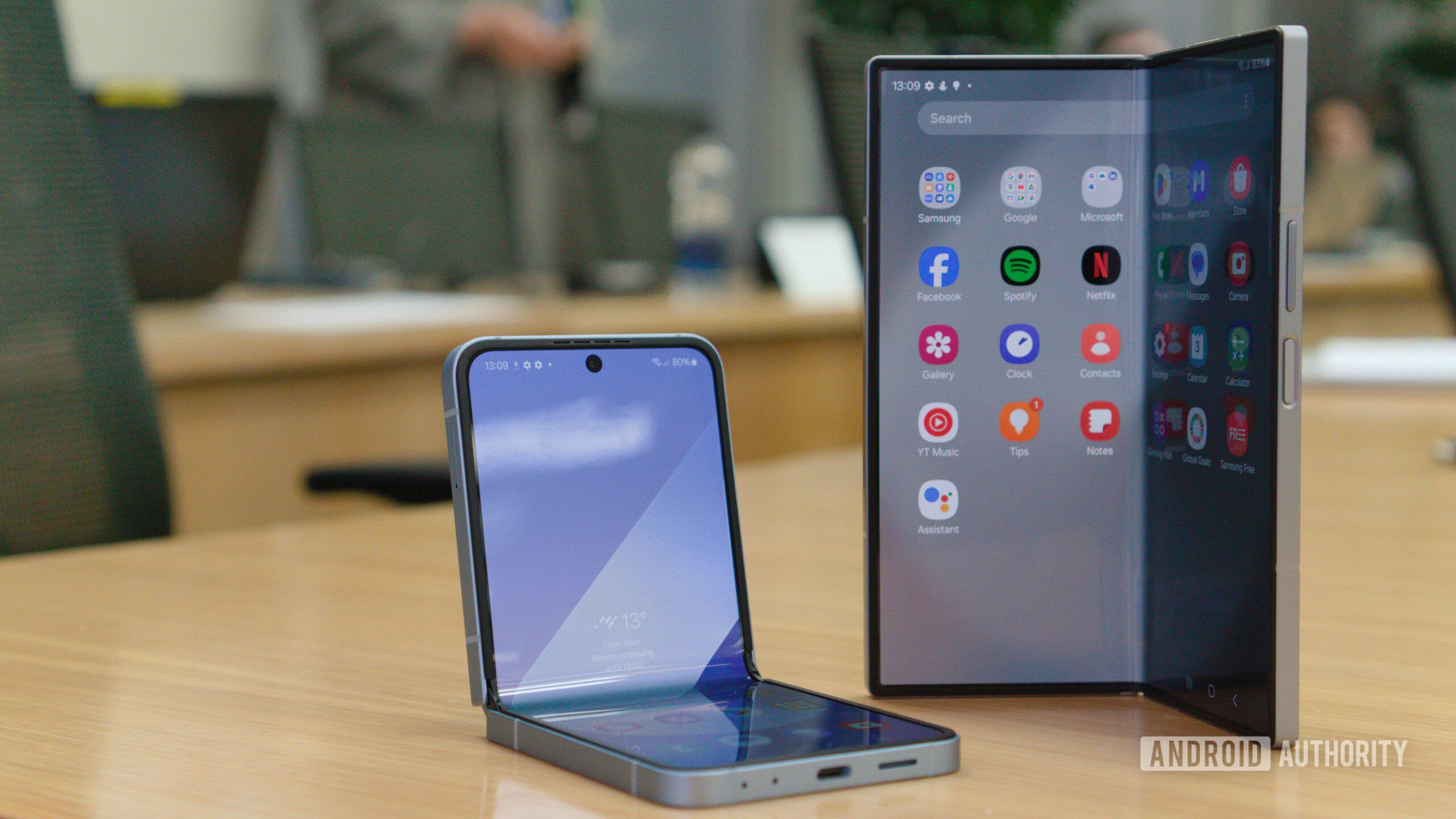
If you still want a Samsung phone but want something more unique, the Galaxy Z Fold 6 and Galaxy Z Flip 6 both come in dual-SIM configurations. That’s right, it’s time to talk about the most popular foldable phones. To oversimplify things, the Galaxy Z Fold 6 is for the power user, while the Galaxy Z Flip 6 is for anyone who misses the days of the classic flip phone and wants to fit their phone comfortably in a pocket.
Outside of the exciting form factors, the Galaxy Z Flip 6 and Galaxy Z Fold 6 pack the internal components to compete against the best of them. Both come with a Qualcomm Snapdragon 8 Gen 3 processor and a competent 12GB of RAM. Like the Galaxy S24 series mentioned above, the dual-SIM setups for Samsung’s Galaxy Z Fold 6 will vary by market. It supports two physical SIM cards in some countries, while others need a combination of nano-SIM and eSIM.
On the other hand, the Galaxy Z Flip 6 only comes in one configuration. Its compact form factor means that Samsung didn’t have enough space for two physical SIM cards, so all users will have to get comfortable with eSIM if they want more than one phone number on their flip phone.
Just keep in mind that these foldable phones are expensive. The Samsung Galaxy Fold 6 costs a whopping $1,900 for its base configuration, while the Samsung Galaxy Z Flip 6 starts at $1,100.




Galaxy Z Fold 6 specs:
- Display: 7.6-inch 1,856 x 2,160 and 6.3-inch 968 x 2,376
- SoC: Snapdragon 8 Gen 3
- RAM: 12GB
- Storage: 256/512/1,024GB
- Cameras: 50, 12, and 10MP
- Front camera: 10MP, 4MP
- Battery: 4,400mAh
- Software: Android 14
Galaxy Z Flip 6 specs:
- Display: 6.7-inch FHD+ and 3.4-inch 720 x 748
- SoC: Snapdragon 8 Gen 3
- RAM: 12GB
- Storage: 256/512GB
- Cameras: 50 and 12MP
- Front camera: 10MP
- Battery: 4,000mAh
- Software: Android 14
Google Pixel 9, Pixel 9 Pro, and Pixel 9 Pro XL
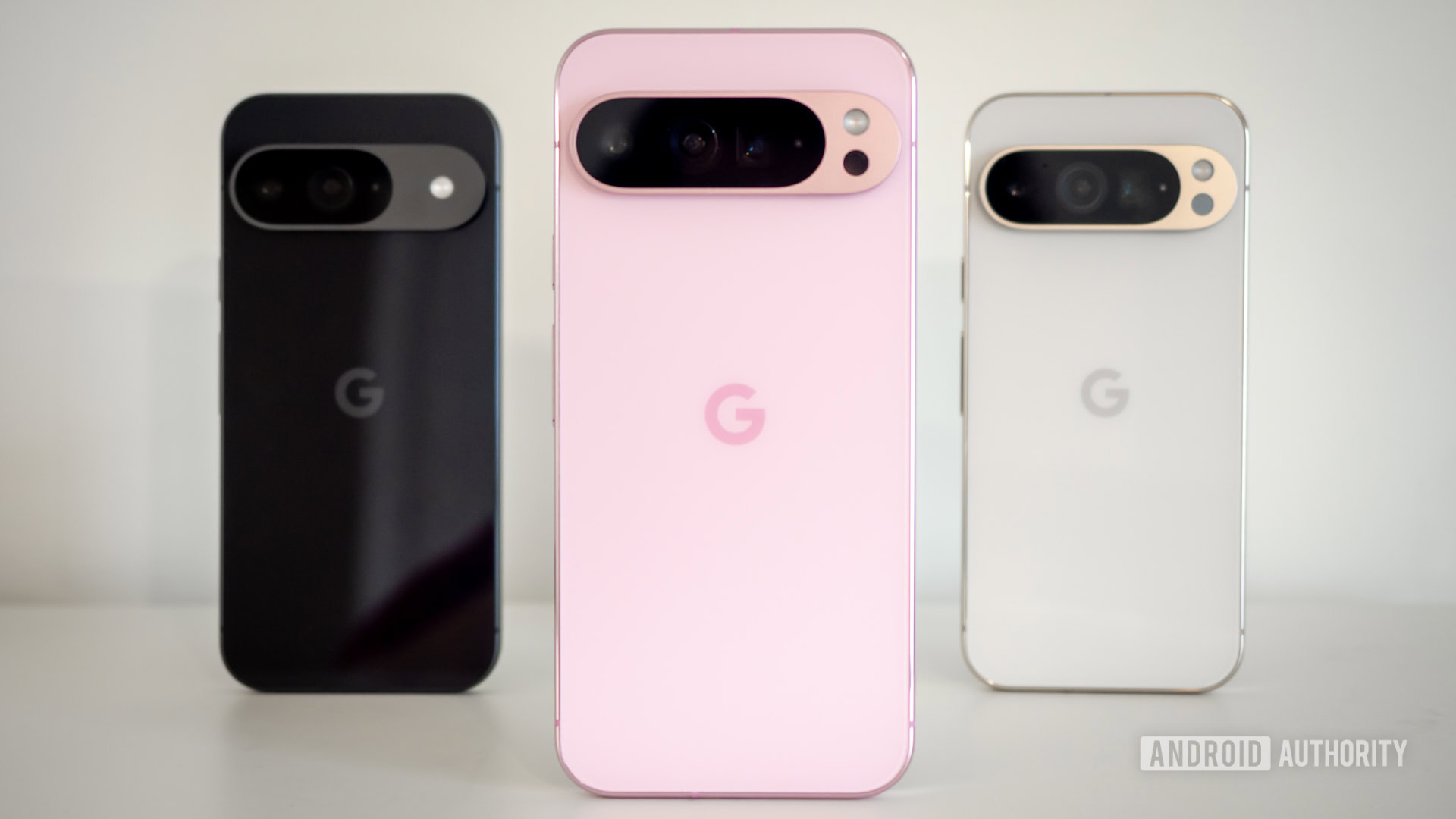
2024 was an exciting year for the smartphone industry, and the Google Pixel 9 series lineup was definitely one of the highlights of the year. For starters, the series included four devices: the Pixel 9, Pixel 9 Pro, Pixel 9 Pro XL, and Pixel 9 Pro Fold. Let’s cover the first three, which are likely to be the most popular devices. Plus, we have a dedicated section for the Pixel 9 Pro Fold coming up next.
All Pixel 9 series devices are amazing. In our Pixel 9 and Pixel 9 Pro XL reviews, we praise both for their excellent design and build quality. The squared-off aluminum edges and glass build feel more premium than ever. Not to mention, they come in various gorgeous colors for personalization.
All models feature a Google Tensor G4 processor. Things are a bit different in terms of RAM, though. The base Pixel 9 has 12GB of RAM, while the others get upgraded to 16GB of RAM. Of course, all camera systems will be great, as has now become a tradition in Pixel devices. That said, the Pro models will get the better end of the stick here, featuring an extra 113mm periscope telephoto shooter.
Being a Google phone, you will also get one of the best update commitments the industry has to offer. All of these phones will get seven years of OS upgrades, security patches, and Pixel drops. And, of course, all come with dual-SIM support, but only by using both a nano-SIM card slot and eSIM.

Gorgeous display
Seven years of software updates

Excellent build quality
Flexible, capable cameras
Reliable update commitment

Excellent build quality, refined design
Extensive update policy
Pixel 9 specs:
- Display: 6.3-inch, Full HD+
- SoC: Tensor G4
- RAM: 12GB
- Storage: 128/256GB
- Cameras: 50 and 48MP
- Front camera: 10.5MP
- Battery: 4,700mAh
- Software: Android 14
Pixel 9 Pro specs:
- Display: 6.3-inch, 2,856 x 1,280
- SoC: Tensor G4
- RAM: 16GB
- Storage: 128/256/512/1,024GB
- Cameras: 50, 48, and 48MP
- Front camera: 42MP
- Battery: 4,700mAh
- Software: Android 14
Pixel 9 Pro XL specs:
- Display: 6.8-inch, 2,992 x 1,344
- SoC: Tensor G4
- RAM: 16GB
- Storage: 128/256/512/1,024GB
- Cameras: 50, 48, and 48MP
- Front camera: 42MP
- Battery: 5,060mAh
- Software: Android 14
Google Pixel 9 Pro Fold
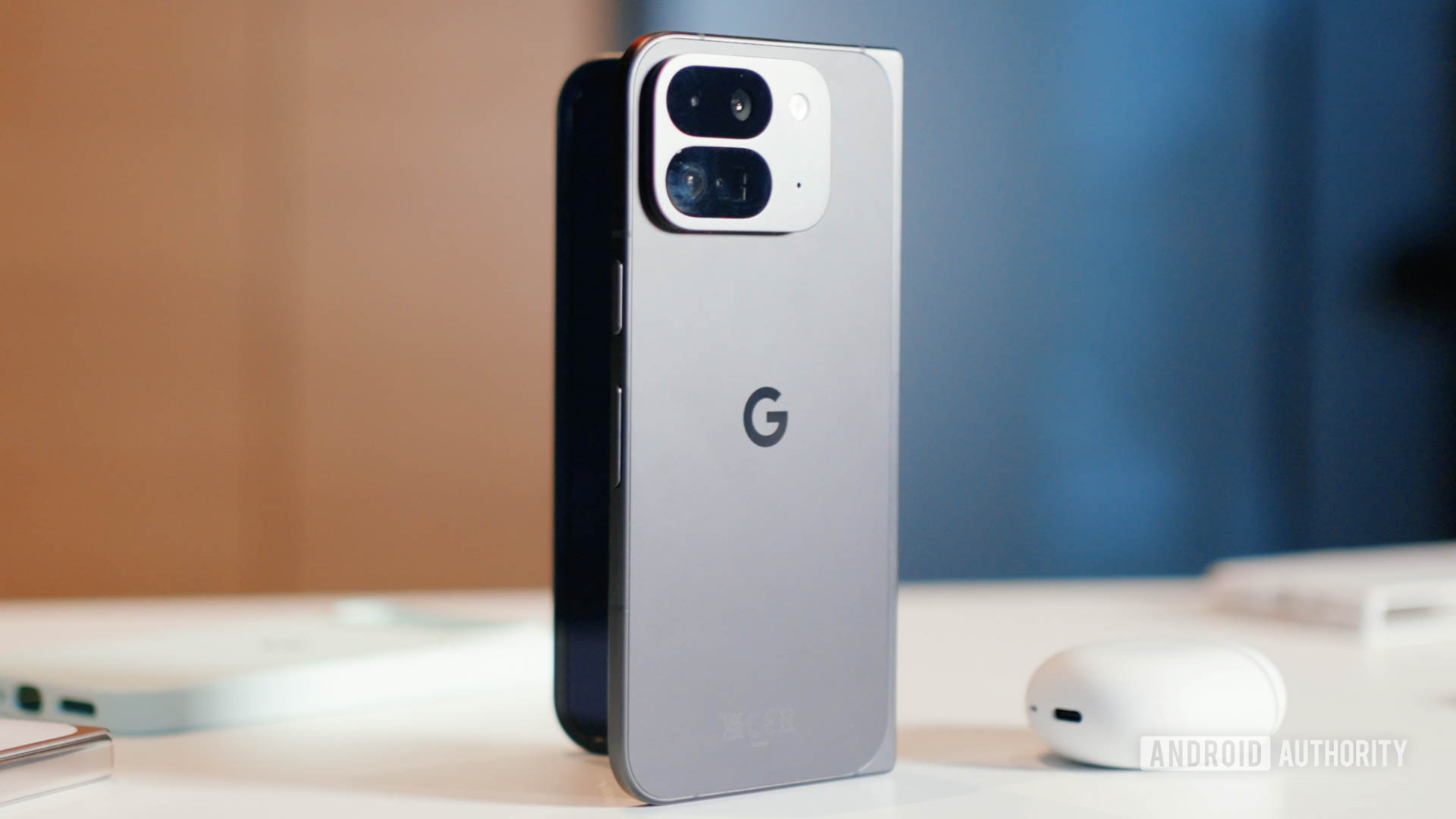
If you’re a fan of Google devices but want a unique folding form factor, the Pixel 9 Pro Fold is the one for you. You’ll pay a high ticket price to own one, though, as the device costs $1,799 for the base version.
Of course, we’ve already reviewed the Google Pixel 9 Pro Fold, and it’s definitely a winner if you can comfortably pay its high ticket price. Like the other Pixel 9 devices, you’ll have to take advantage of the single nano-SIM card slot, as well as eSIM, but it’s definitely possible!
The Pixel 9 Pro Fold has a similar design language to the other Pixel 9 devices, and we were quite impressed by the build quality. It’s super thin and unfolds completely flat this time around. Both the internal and external OLED displays are gorgeous and super bright, capable of up to 2,700 nits of peak brightness. And, of course, you’ll get the same seven-year update promise, and a bunch of Gemini AI features.
This is still one of the best foldable smartphones, up there with Samsung’s. It’s also a bit too expensive, just like Samsung’s. We suppose it all depends on which manufacturer’s products you prefer.


Pixel 9 Pro Fold specs:
- Display: 8.0-inch 2,076 x 2,152 and 6.3-inch FHD+
- SoC: Tensor G4
- RAM: 16GB
- Storage: 256/512GB
- Cameras: 48, 10.8, and 10.5MP
- Front camera: 10MP and 10MP
- Battery: 4,650mAh
- Software: Android 14
Motorola Razr Plus 2024
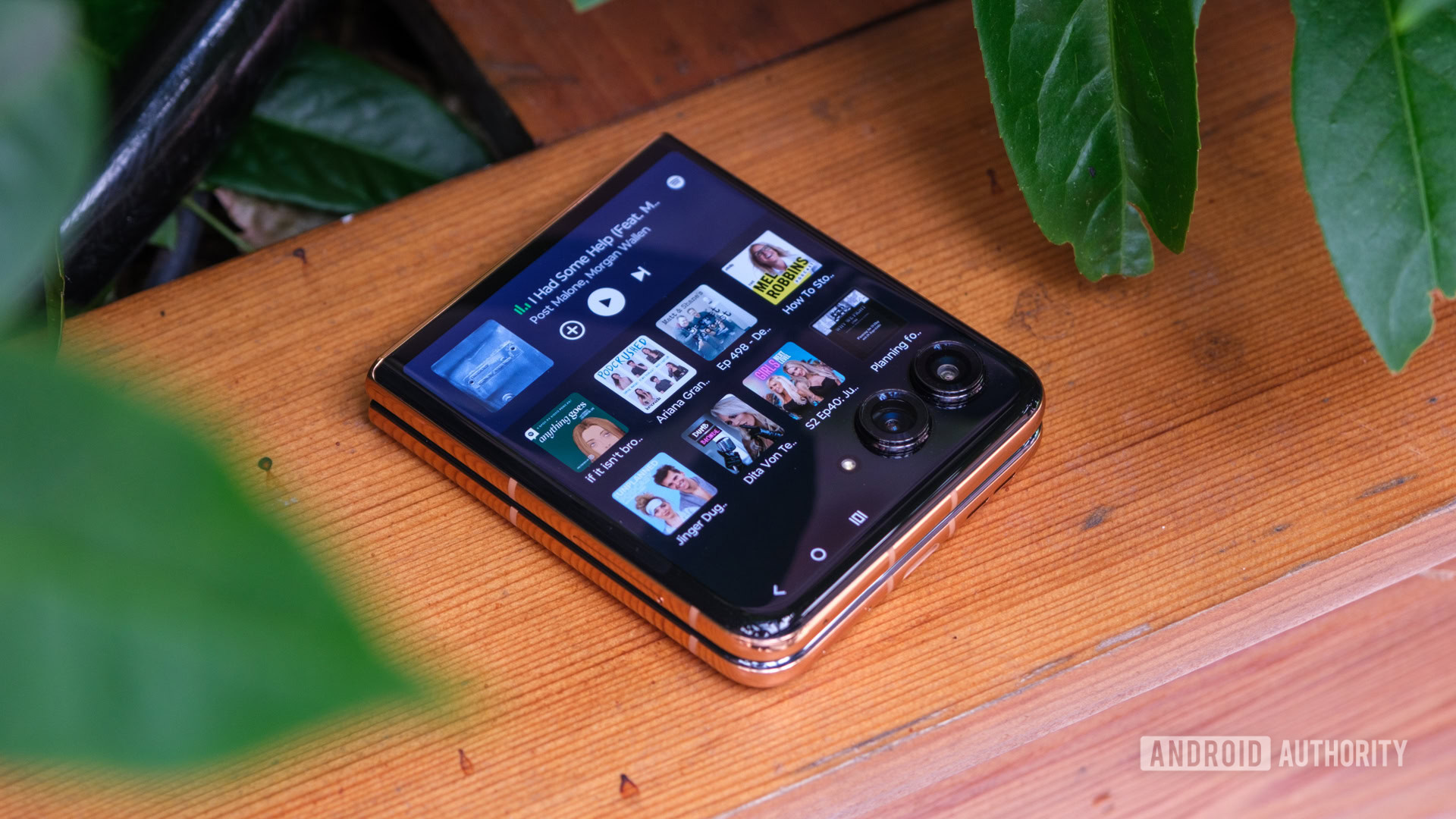
If you’re looking for a foldable flip phone and don’t have much love for Samsung, then the Motorola Razr Plus 2024 may be more up your alley. In fact, many claim Motorola’s foldables are better handsets for the price. It has a slightly lower $1,000 starting price point, and doesn’t make many sacrifices.
For starters, the design is a bit more unique, featuring a vegan leather look and feel that doesn’t only look great, but also feels very comfortable to the touch. It’s definitely much more personal than cold, hard glass.
Performance is also great, thanks to the Qualcomm Snapdragon 8s Gen 3 and 12GB of RAM. In our Motorola Razr Plus 2024 review we also praised it for its clean software experience, which is very close to vanilla Android. The cameras are also slightly better than its predecessor’s. And while battery life isn’t outstanding, at least you get quick 45W wired charging and 15W wireless charging.
By the way, the main display is pretty impressive. It has a 6.9-inch Full HD+ LTPO AMOLED panel with a super smooth 165Hz refresh rate. The 4.0-inch cover screen is just as stunning. Thanks to its nano-SIM slot and eSIM capabilities, dual-SIM capabilities are possible.
Of course, if you want to save money, there’s also the Motorola Razr 2024 ($699 at Amazon).


Razr Plus 2024 specs:
- Display: 6.9-inch Full HD+ and 4.0-inch 1,272 x 1,080
- SoC: Snapdragon 8 Gen 3
- RAM: 12GB
- Storage: 256GB
- Cameras: 50 and 50MP
- Front camera: 32MP
- Battery: 4,000mAh
- Software: Android 14
OnePlus 13
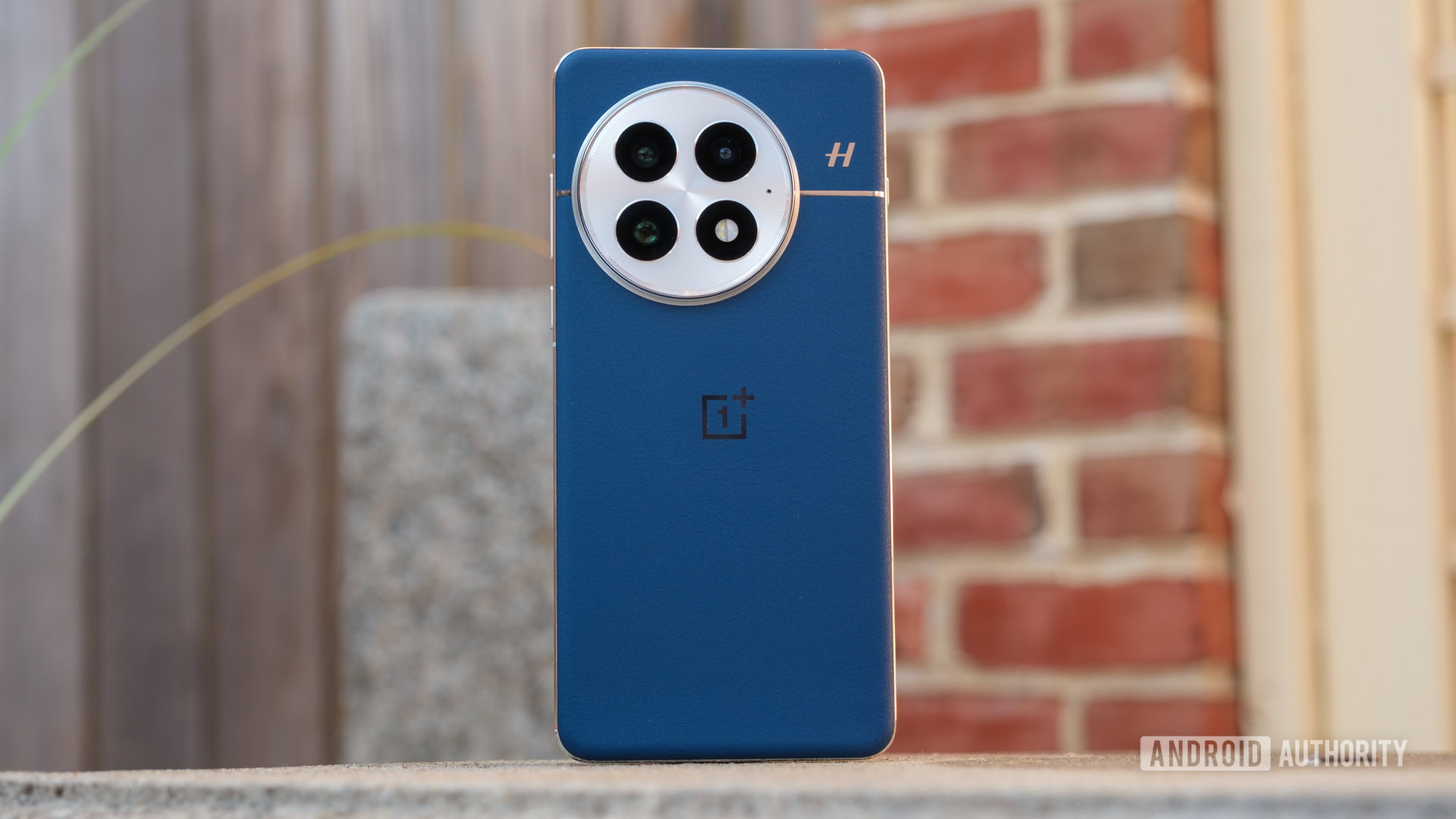
If you like to go off the beaten path, the OnePlus 13 is definitely among the best dual-SIM phones around. It competes with high-end smartphones yet has a more reasonable starting price of $899.99.
The OnePlus 13 comes with dual nano-SIM card support, but some of you will also get eSIM compatibility. In either case, only two SIMs can be active at any given time.
As a phone, you’re getting a really nice experience. In fact, we gave it five stars in our OnePlus 13 review, which isn’t something we do often. It gets a Snapdragon 8 Elite and 12-24GB of RAM. This means no device will outperform it by much. You’ll also enjoy a 6.82 AMOLED display with a QHD+ resolution and a 120Hz refresh rate.
We loved its camera system, which includes three 50MP shooters. The design is quite unique, and very nicely made. Not to mention, this time, OnePlus cut no corners in ingress protection, as it gets an IP68/IP69 rating, outperforming even the best smartphones out there, which usually get only an IP68 rating.
Charging is amazingly fast, at 100W, and you can even charge wirelessly at 50W! To put things into perspective, the Samsung Galaxy S25 Ultra can charge at 45W, so this phone’s wireless charging can beat Samsung’s top contender’s wired charging. What’s best is you won’t have to charge it very often. In our experience, the 6,000mAh battery was able to last about two full days!


OnePlus 13 specs:
- Display: 6.82-inch, QHD+
- SoC: Snapdragon 8 Elite
- RAM: 12/16/24GB
- Storage: 256/512/1,024GB
- Cameras: 50, 50, and 50MP
- Front camera: 32MP
- Battery: 6,000mAh
- Software: Android 15
Google Pixel 8a
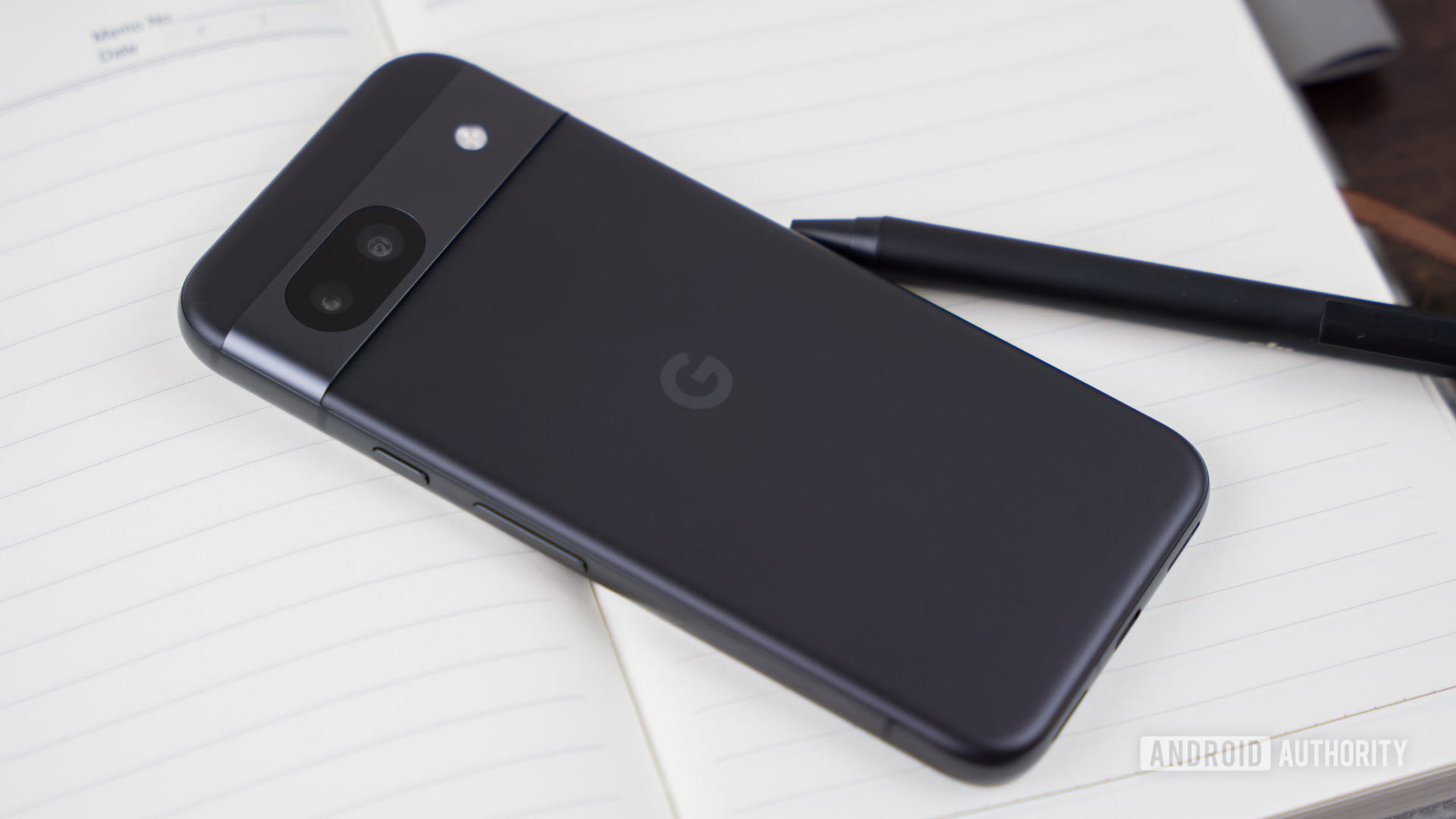
The Google Pixel 8a represents just how good an affordable Android phone can be. It comes in at $499 and offers a well-rounded experience. It’s easily one of the most respected phones under $500, and we didn’t have much to complain about during our Google Pixel 8a review.
While made of cheaper materials, the device still feels pretty good in the hand, and some may like the more textured back, as opposed to the slipper glass back on the Pixel 9 series. It also helps it’s less prone to fingerprints and smudges. Considering the price, it also has a pretty fantastic display, featuring an OLED panel with a Full HD+ resolution and a 120Hz refresh rate. The performance is excellent, thanks to the Google Tensor G3 processor and 8GB of RAM.
Surprisingly, the battery life was pretty decent. In our tests, it was able to last nearly 20 hours playing 4K video. Additionally, as with all Pixel devices, the Pixel 8a comes with a pretty decent camera system. And just like with other recent Pixel phones, you’ll get an amazing seven-year update commitment.
In terms of dual-SIM capabilities, you’ll have to settle with having one line use the nano-SIM card slot, while the second one can be accessed through eSIM.


Pixel 8a specs
- Display: 6.1-inch, Full HD+
- SoC: Google Tensor G3
- RAM: 8GB
- Storage: 128/256GB
- Cameras: 64 and 13MP
- Front camera: 13MP
- Battery: 4,492mAh
- Software: Android 14
Sony Xperia 1 VI
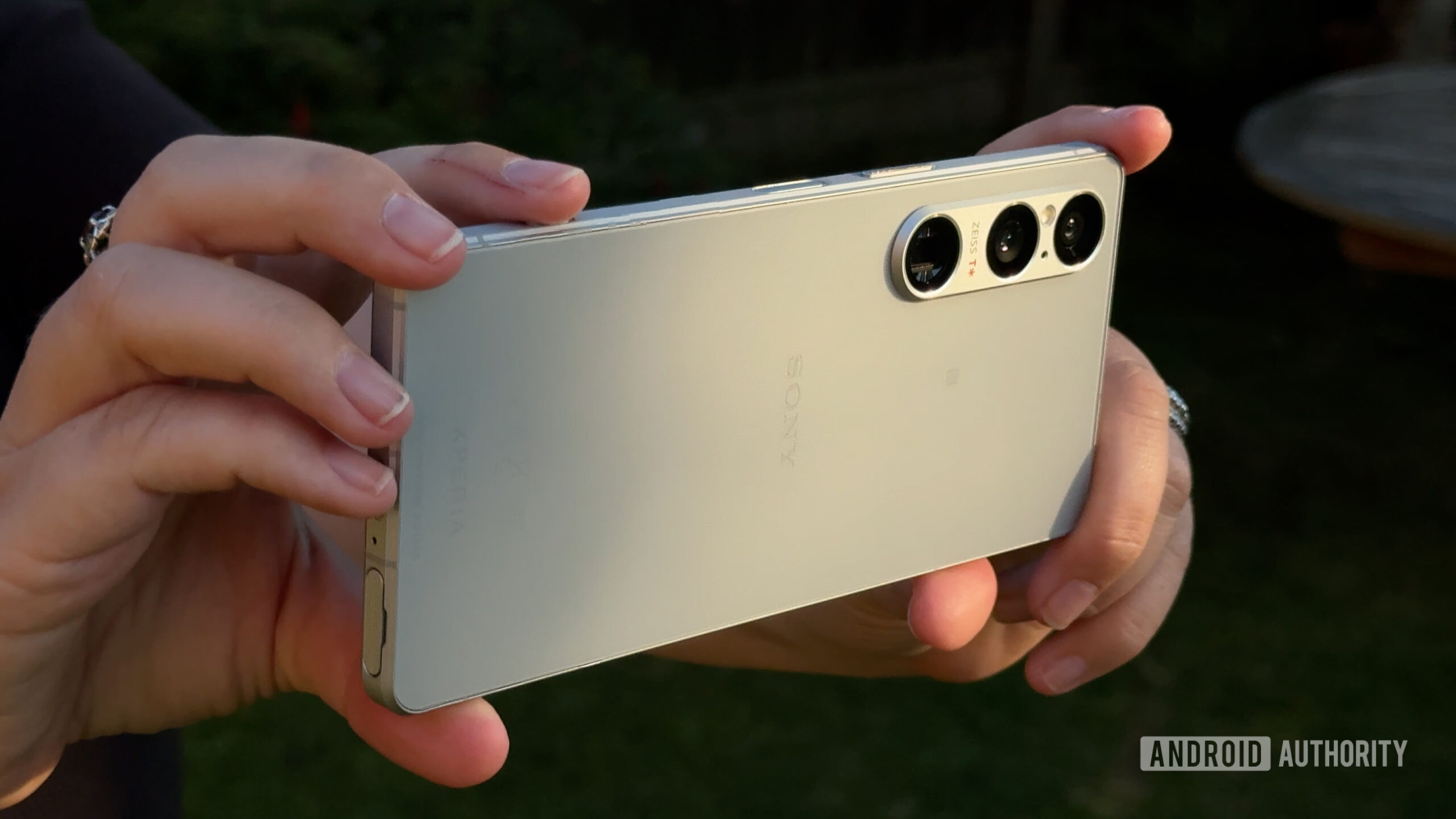
The new Sony Xperia 1 VI is a great device that easily makes it to our list of the best dual-SIM Android phones. In fact, in our Sony Xperia 1 VI review we mention it’s the best Sony flagship we’ve seen in years, but it has two very important downsides. For starters, the $1,399 price point is too high. Additionally, it’s not available in the US. If you can get past those cons, this phone is a treat.
The Sony Xperia 1 VI is up there with the best, offering a great user experience. Thanks to the Snapdragon 8 Gen 3 processor and 12GB of RAM, performance is great. The 5,000mAh battery makes it last for over 10 hours of screen-on time per charge.
As with Sony flagships, this one has a fantastic camera system. Its versatile camera array can deliver lossless quality in a wide variety of focal ranges, and it offers advanced features like eye tracking, focus peaking, amazing macro capabilities, and more.
There are different versions of the Sony Xperia 1 VI, in terms of dual-SIM capabilities. Some markets will get two physical SIM card slots, while others need to use the nano-SIM and eSIM combo.


Xperia 1 VI specs:
- Display: 6.5-inch, Full HD+
- SoC: Snapdragon 8 Gen 3
- RAM: 12GB
- Storage: 256/512GB
- Cameras: 48, 12, and 12MP
- Front camera: 12MP
- Battery: 5,000mAh
- Software: Android 14
ASUS ROG Phone 9 Pro
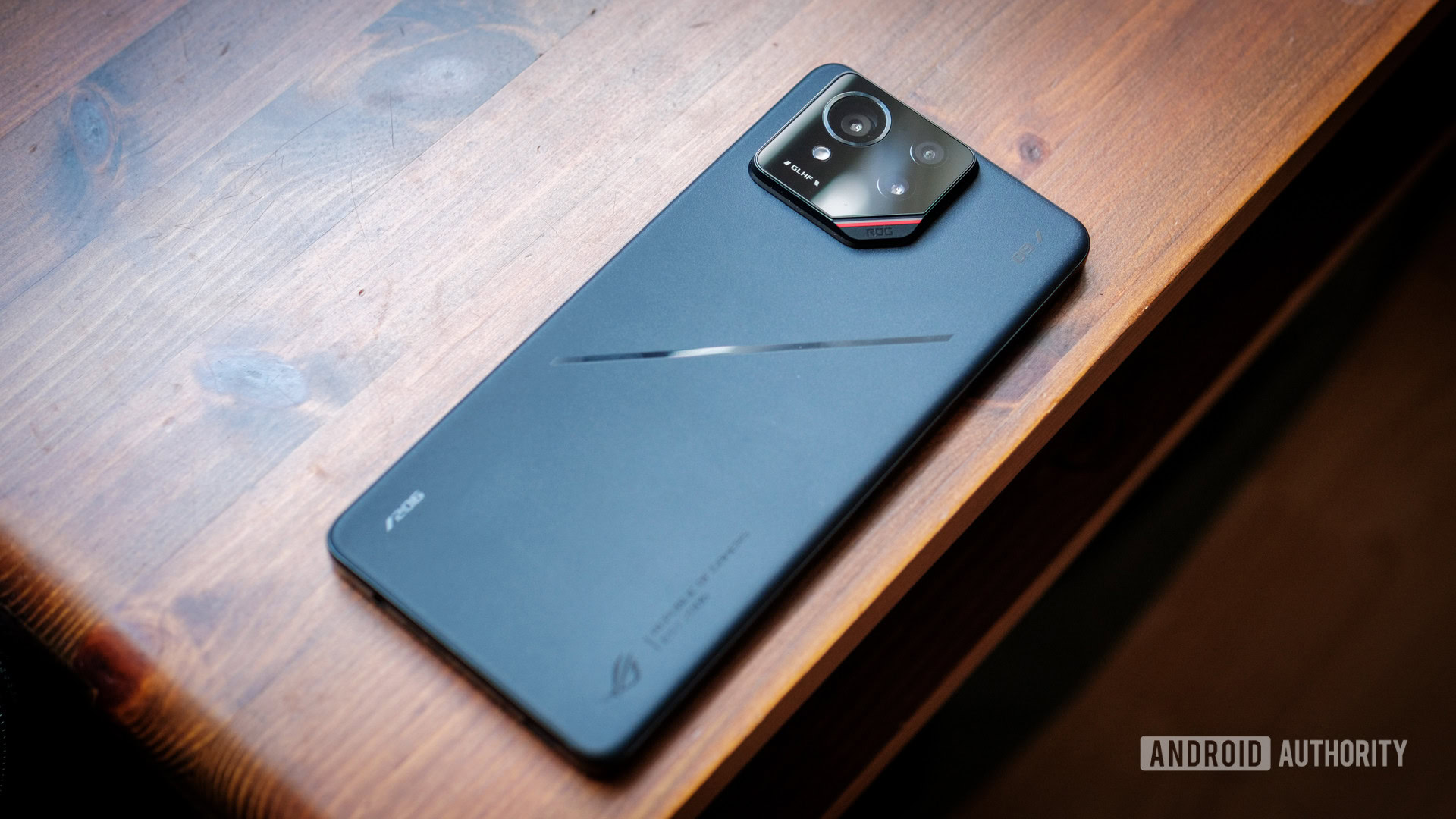
If you’re looking for one of the absolute best phones, looking into some of the best gaming phones is a safe bet. These devices are supercharged with mighty specs, great screens, efficient cooling, large batteries, and everything that makes a good gaming experience.
The ASUS ROG Phone 9 Pro is the company’s latest and greatest device. It is something else. It comes with some of the best specs around, including a Snapdragon 8 Elite processor and up to 24GB of RAM. The minimum is 16GB of RAM, which is still outstanding! In fact, in our ASUS ROG Phone 9 Pro review we mention its performance may be a bit “overkill.”
The display is especially nice, measuring 6.78 inches. It has a Full HD+ resolution, which isn’t too impressive, but we really like its super smooth 185Hz refresh rate.
We were also impressed by the battery life, which can last multiple days. It can even survive several hours of high-end gaming. And if you need to charge, you can do so at 65W. The camera system is a bit inconsistent, but gaming phones aren’t really known for camera performance, anyway.
Most of us will get to enjoy the version with a nano-SIM card slot and an eSIM. That said, there are models with dual nano-SIM card slots.


ROG Phone 9 Pro specs:
- Display: 6.78-inch, FHD+
- SoC: Snapdragon 8 Elite
- RAM: 16/24GB
- Storage: 512/1,024GB
- Cameras: 50, 13, and 32MP
- Front camera: 32MP
- Battery: 5,800mAh
- Software: Android 15
ASUS ZenFone 11 Ultra
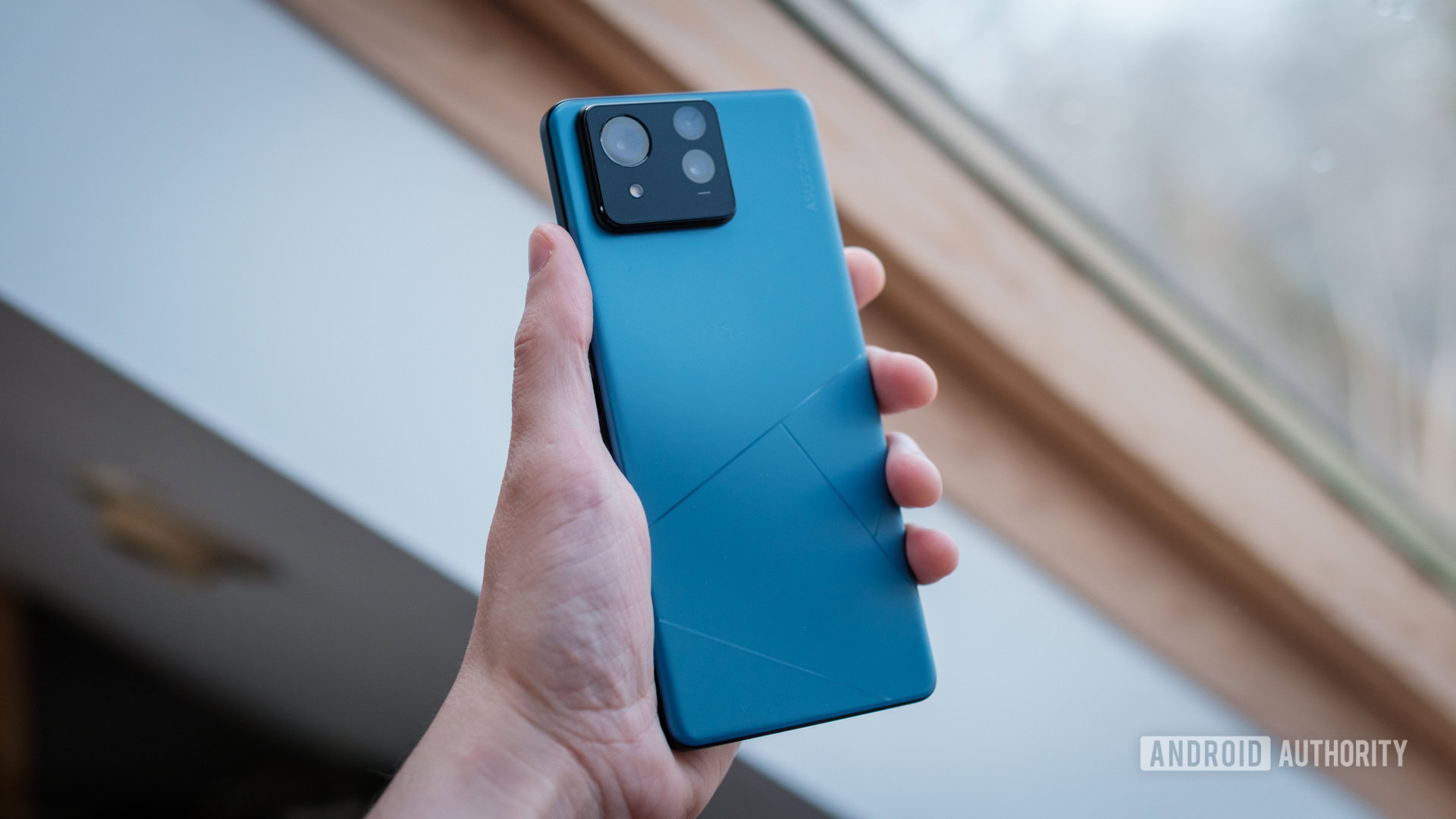
ASUS changed things up a bit with the Zenfone 11 Ultra. The phone is no longer one of the best small phones, featuring a large 6.78-inch screen. It’s also not really a budget phone, either, coming in at $900. One thing is for sure, though: this is still one of the best dual-SIM Android phones.
This is actually one of the few smartphones with an actual dual-SIM setup. It houses two physical nano-SIM card slots. SIM support aside, it is a flagship phone through and through. The design is gorgeous, and it comes with top-notch performance. The LTPO AMOLED panel has a 1080p resolution and a 144Hz refresh rate. The battery is large at 5,500mAh, and you can charge it at 65W speeds. You’re getting the whole package here.


ZenFone 11 Ultra specs:
- Display: 6.78-inch, FHD+
- SoC: Snapdragon 8 Gen 3
- RAM: 12/16GB
- Storage: 256/512GB
- Cameras: 50. 32, and 13MP
- Front camera: 32MP
- Battery: 5,500mAh
- Software: Android 14
We get one frequently asked question that’s also worth addressing here. Many people are looking for dual-SIM phones, but some are looking for Dual Active SIM phones instead of Dual Standby. Dual Standby is much more common; almost every phone listed here is that type.
Dual Active SIM phones are almost extinct because carriers support new phone options to conduct multiple connections. The move has been made over to VoLTE by most carriers in most locations. That allows you to make two calls at once over data, which essentially was a key reason for having older Dual Active options, where it was more necessary to establish the connections.
